
Proud of the past, in a strong position for the future!
MEGGLE through the ages
At MEGGLE we are not only closely connected to our Wasserburg am Inn location, but also to our history. MEGGLE has stood for stability and adaptability for three generations. Always orientated on the core values of tradition, innovation, quality and success, MEGGLE has developed over the years from a small cheese dairy to a pioneer in the processing of milk and dairy products. More than 135 years of entrepreneurial determination, courage to change and responsibility in action for employees shape MEGGLE’s self-image.
Read everything about our eventful company history here and take a look at the milestones in MEGGLE’s history.
-
1877
Move to Upper Bavaria
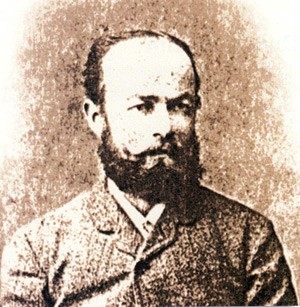
Josef Anton Meggle I was passed over for the inheritance, left the Böckler farm in Allgäu and moved to Upper Bavaria. As a stable hand in Pfaffing, he also gained experience in the cheese dairy.
-
1881
Two is better than one
Josef Anton I. married Maria Danner in the Grafing parish church and leased a cheese dairy in Felling near Edling. Due to a lack of transport options, he soon ran seven more cheese dairies in the nearby area. The hard work began at two in the morning and carried on until late at night. The first daughter Maria Meggle was born in late 1882.

Wedding of Josef Anton I and Maria Danner -
1886
Setback and starting a business
To open up new sales markets, Josef Anton’s brother Jakob Meggle opened a cheese sales outlet in Dresden in 1886. However, his miscalculations led him to lose all of his savings. The family had to start over from scratch.
Josef Anton I took another run at it and started off by leasing the little Doll House in Reitmehring because of its railway connection. With the registration of his cheese business in the tax community of Attel on March 18, 1887, the foundation for today’s company was laid.
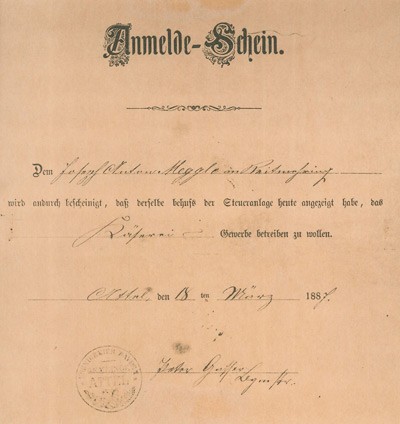
Founding certificate of the current company headquarters -
1890
Positive development
In the 1890s, six surrounding cheese dairies were sold to ‘Käseburschen’ – on the condition that they continued to supply cheese to Reitmehring.

-
1895
Birth of Josef Anton Meggle II.
Josef Anton Meggle II was born on November 6, 1895. On the day of his baptism, his father is said to have shared the first bottle of wine of his life with his godfather. In 1896 the first accountant was hired.
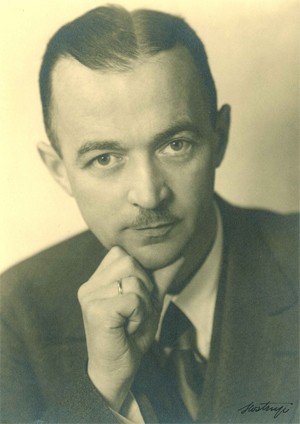
-
1902
Weberhof estate purchase and restoration
In 1902, Josef Anton Meggle I purchased the Weberhof, which was almost completely destroyed in a lightning-induced fire in 1906. To finance the reconstruction work, the family ‘begs for the fire tax’ in the community.
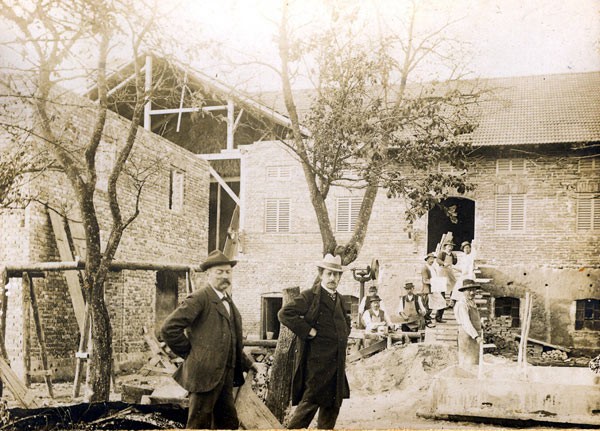
-
1907
Meggle family
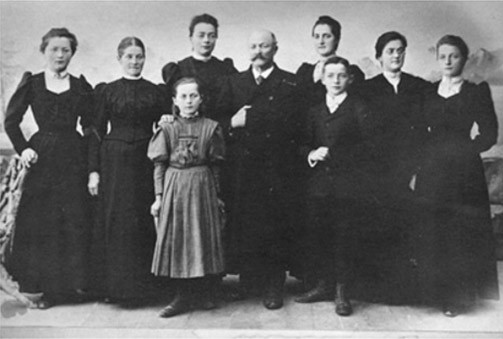
Back row, left to right: Julie, Maria, Maria, Elisabeth, Anna, Mathilde. Front row, left to right: Amalie, Josef Anton I, Josef Anton II. -
1912
Change of plans
In 1912, Josef Anton Meggle I died suddenly at the age of 55 while he was driving the cattle to pasture. His family’s lament: ‘We were left with so much debt after father’s death that the foundation was shaking.’
Josef Anton Meggle II, who originally wanted to become an electrical engineer, joined the company in 1913 after passing the journeyman’s examination to become a cheese maker. His maxim: Only the very best quality will let you survive on the market.
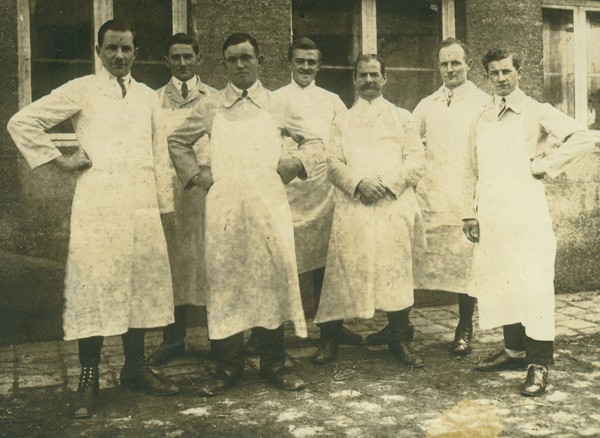
Josef Anton Meggle II joined the company in 1913 -
1915
First World War
On February 1, 1915, Josef Anton II was drafted and first had to go to Munich for training. He suffered a ruptured appendix at the front in Macedonia. Meanwhile, his mother and sister continued to run the business very successfully – not least through fattening pigs.

Josef Anton Meggle II (recumbent) at the military hospital in Ulm -
1920
Electricity expansion
‘When I took thing into my hands and was convinced that something had to come of it, I never let myself be dissuaded.’
Josef Anton Meggle II began the systematic expansion of the power supply. He had lines laid to Reitmehring with the aim of supplying the entire town. The water pumps and centrifuges were now operated electrically. Despite much resistance, ridicule and scorn, he built his own power plant and from then on supplied the community with electricity.
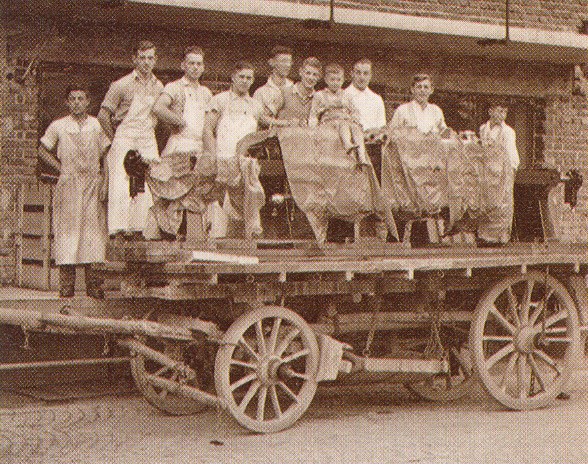
The first instant water heater -
1929
Company logo is introduced
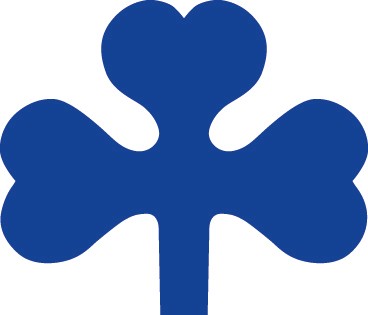
The first MEGGLE company logo is created -
1930
Expansion, wedding and birth of Josef Anton Meggle III.
In April 1930, Josef Anton Meggle II married the bookkeeper Anna Wunderlich. On May 12, 1931, their only son, Josef Anton Meggle III, called Toni, was born – the current company owner.
The company continued to grow steadily in the 1930s. MEGGLE merged its Munich operations to form the ‘Milchverfassungsgesellschaft Bayrische Landwirte’ (Milk Association of Bavarian Farmers) the largest and most modern dairy company in Munich.
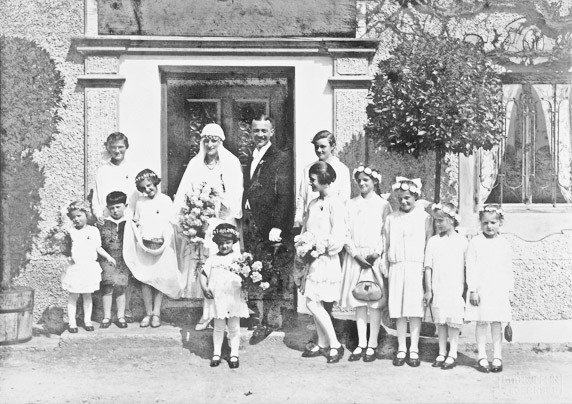
Josef Anton II getting married in Staudham -
1932
First butter moulding machine
In 1935, a new milk intake, a milk processing room and a state-of-the-art butter factory were completed in Reitmehring.
In 1932, semi-automatic production began with the first butter-moulding machine for 250 g and 500 g pieces.
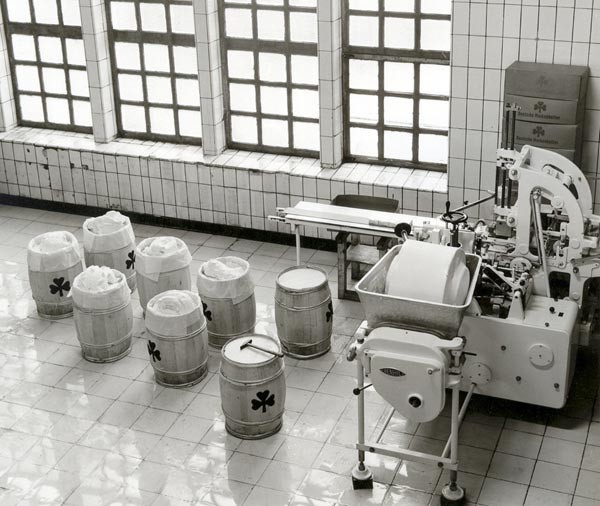
Butter factory in the 30s -
1937
50th anniversary celebration

The 50th anniversary celebration in 1937: Josef Anton II with his son ‘Toni’ in the centre -
1939
Stagnation in World War II
The Second World War began on September 1, 1939. Since materials and building materials were rationed, any further expansion of the facilities was not possible for the time being.
Employees of military service age were drafted and lorries confiscated. 60 foreign workers were assigned to the company and a temporary dormitory built for them. On the initiative of Anna Meggle, a support fund for all needy company employees was set up in 1942.

Company roll call during the Second World War -
1945
Years of hunger
From 1945 to 1948, basic food items could only be obtained with food stamps. Excluded from this regulation: whey – previously a waste product for pig fattening. Josef Anton II procured equipment to produce baker’s yeast, milk sugar (lactose) and spreads from whey. Of course, these products are no culinary revelations and could only be sold to cover costs in times of need. In 1946 a works council was set up on a voluntary basis. Trustees ran the company for a few years and caused a lot of damage in the process. Franz Bosch took over the factory management.

Laboratory product development -
1948
New technologies and ideas
Experiments with whey processing could finally be resumed. An ion exchanger to demineralise milk was purchased as early as 1948. The milk protein sugar obtained was used as a substitute for beet sugar and for baby food.
In 1949 the first spray tower for drying the whey was commissioned. It ensured a higher product quality and replaced the roller dryer. In 1949 a fertilisation station was set up.

Drum dryer -
1950
Growth
The early years of the so-called German Economic Miracle were also characterized by high investments at MEGGLE: In 1954 a new milk depot was built and in 1956 a new butter dairy. In 1958, a boiler for the power plant and the first combined heat and power plant to generate electricity and steam went into operation.

-
1953
Casein and animal feed
In 1953, the rennet and acid-casein production for lactose was started in the former boiler house using basic equipment. The first pharmaceutical products were created.
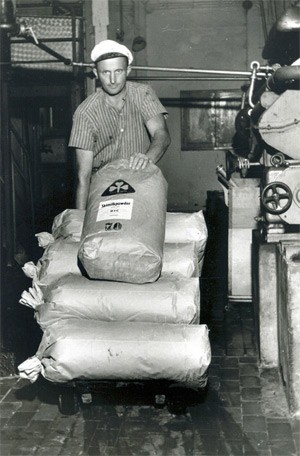
-
1956
Toni Meggle III joins the business
After graduating from high school, Toni Meggle initially completed training to become a dairy master. He then acquired extensive knowledge in business management during his training as an industrial clerk at the Management Center Europe (MCE) in Brussels and, after completing his specialist training, began working in his father’s company in 1956.

-
1960
Invention of portioned butter
To feed the 500,000 international participants of the World Eucharistic Congress in Munich, MEGGLE invented the practical, portioned butter, which is now served by many airlines and in numerous hotels.

First moulding system for portioned butter -
1960
Two-generations of leadership and social commitment
On January 1, 1960, Toni Meggle became a partner alongside his father. In the same year, the first moulding system for portioned butter goes into operation. MEGGLE takes over dominance in several markets and conquers new production areas. The company achieved sales of 100 million marks for the first time. At the same time, on the initiative of Toni Meggle, a company pension scheme is introduced for employees. His father donated land and church bells for the St. Anton Church in Reitmehring. In addition, the St. Antonius settlement was founded for company employees.

Foundation of the St. Antonius settlement -
1968
The birth of herb butter
Josef Anton Meggle II discovered a product in a delicatessen shop in Zurich that electrified him. Numerous nightly tests were carried out until the recipe met the high standards. This was the birth of herb butter – and the kick-off for the development of numerous other delicious butter specialities.
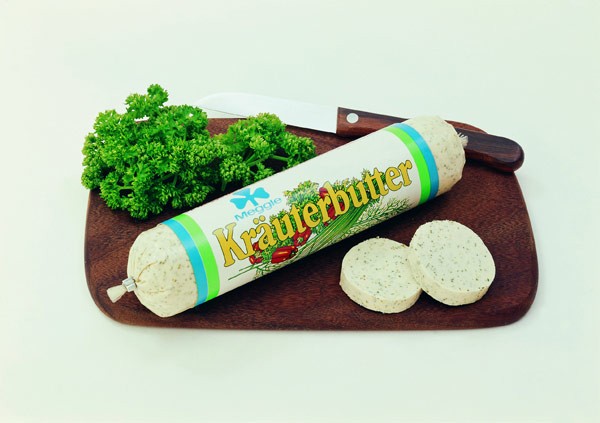
-
1970
From push to pull
MEGGLE established herb butter. In 1972, the market information department (later Marketing) was set up to serve the market in a demand-orientated manner. The cheese dairy became an export-orientated company.
In 1973, Toni Meggle took over as sole Managing Director. This was also accompanied by a change in style: from patriarchal to cooperative leadership. Seminars were held with managers and morning meetings introduced.
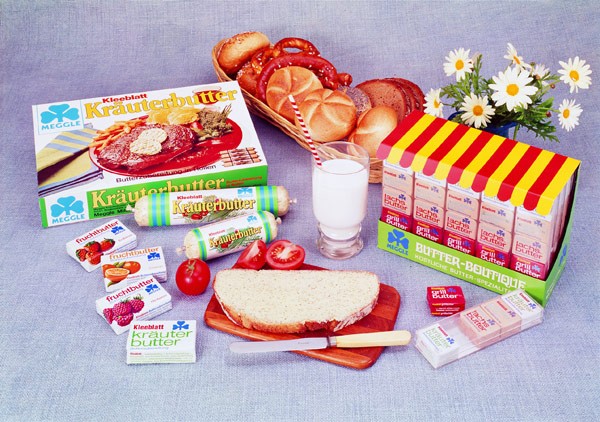
Product range in the 70s -
1977
Internationalisation
MEGGLE was the first Western company in the dairy industry to operate independently in Japan. Back then, the person in charge, T. Goto, formulated the guiding principles for the Japanese workforce: ‘Be open and pay attention to others.’ ‘Trust in the goodwill of others.’ ‘Work hard and always do your best.’ Josef Anton Meggle II died in 1978 at the age of 83.

Founding of MEGGLE Japan Co. Ltd. Tokyo -
1980
Waste treatment plant on site
A new warehouse and tank storage building were built. The company now employed 820 people. A separate rail connection was created. Toni Meggle introduced modern IBM systems at MEGGLE. The factory’s waste treatment plant was commissioned in 1981.
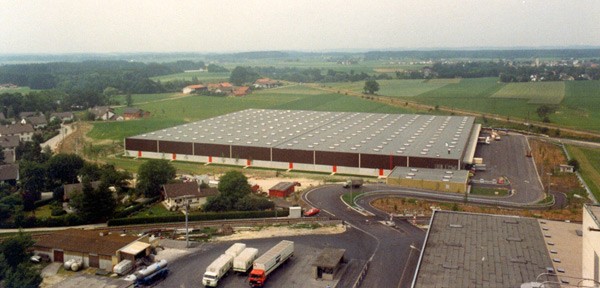
New warehouse with 22,400 sqm -
1985
Premiere of Cellactose 80
MEGGLE was the market leader in functional dry products since 1977. Cellactose 80 was the first compound produced for the pharmaceutical industry. Cellulose is the disintegrating agent for tablets.
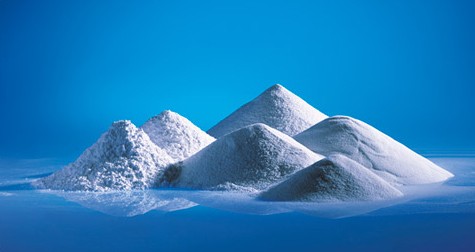
Pharmaceutical lactose for direct tabletting -
1990
Expansion into Eastern Europe
Eastern Europe was opening up and MEGGLE was the first western dairy industry company to establish a sales branch in Slovakia. MEGGLE was also opening up a new line of business with auxiliary materials for the food industry. Toni Meggle (Josef Anton III) created a globally active brand company from a national dairy company.

RAJO production site in Bratislava -
1995
MEGGLE invented chilled herb butter baguettes
Today, it is hard to imagine enjoying barbecues and garden parties, parties, picnics or time at home without a certain snack: the MEGGLE baguettes. It all started with the herb butter baguette – conceived and made by MEGGLE.

MEGGLE herb butter baguette -
1996
Marilyn Monroe and Toni Meggle
The MEGGLE herb butter baguette exceeded all expectations with sales of 25 million per year. The first yogurt butter off the production line. In 1996 the legendary TV commercial with Marilyn Monroe was created. She admits: ‘I am a gourmeggle.’ Toni Meggle created a branded product from a classic no-name product like butter.

‘I’m a gourmeggle’ -
2000
Investments
MEGGLE entered the new millennium with major investments. A state-of-the-art MSD tower (More Stage Dryer) was commissioned for the production of dry products.
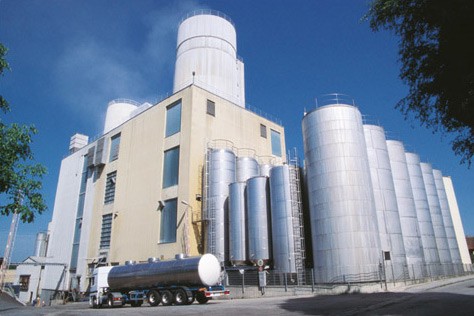
-
2002
Founding of MEGGLE AG
In 2002 MEGGLE was restructured again. MEGGLE AG now formed the umbrella as the management and financial holding company owned by Toni Meggle. At the same time, Toni Meggle began withdrawing from the operational business and has been the chairman of the Supervisory Board ever since.
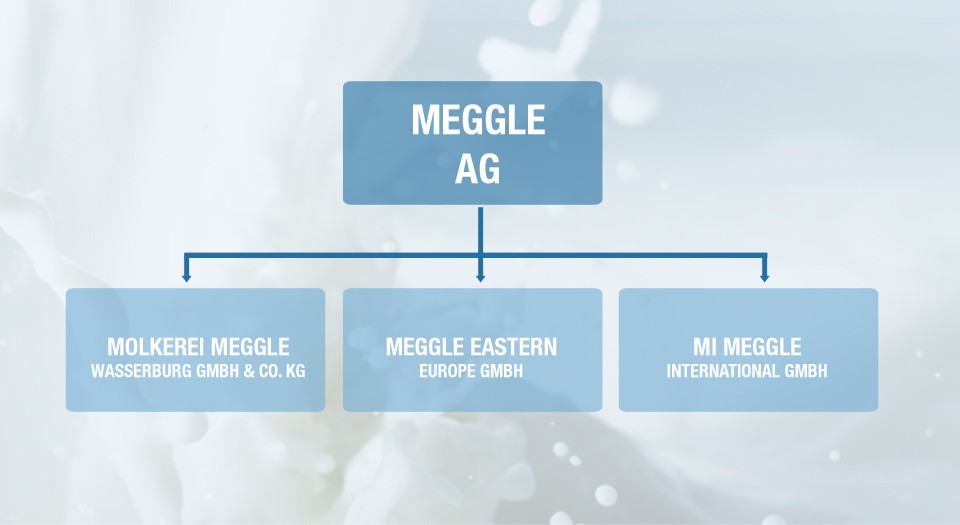
MEGGLE Group -
2003
Worldwide expansion
In 2003, MEGGLE Singapore Ltd. was founded and the MEGGLE Shanghai representative office was opened. Further sales or production locations follow in Austria, Bosnia, Croatia, Turkey, Serbia, Belarus, Slovakia and Ukraine.
The new pharmaceutical tower started operation in 2005. It created capacities for the production of pharmaceutical excipients.
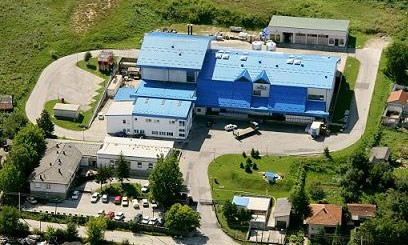
Bihac site, Bosnia-Herzegovina -
2006
Toni Meggle's 75th birthday
MEGGLE now employed 1,591 people worldwide and generated sales worth 560 million euros. On his 75th birthday, Toni Meggle received an honorary citizenship from the city of Wasserburg and the Bavarian Order of Merit from Minister-President Edmund Stoiber. In the same year, MEGGLE received the MOE Award for its commitment to Central and Eastern Europe. In addition, MEGGLE took over the dairy in Bihać, Bosnia and Herzegovina in 2006. A further production site would follow in Bulgaria in 2009: Shumen.
In 2009, the first MEGGLE baguettes rolled off the production line at M-Back – a newly built bakery factory in Gebesee, Thuringia. MEGGLE is the company’s main shareholder with 66%.

Birthday reception -
2011
Setting the course for the future
The new food tower was inaugurated in 2011. Today it is the company’s tallest building and landmark. A sales office was also opened in Dubai and the dairy in Kragujevac, Serbia, was purchased. In addition, MEGGLE took over 100 per cent of the production site in Rroghozine, Albania. MEGGLE now had six production locations in Eastern Europe.
In 2011, the logistics and distribution centre in Posusje, Bosnia and Herzegovina was inaugurated. From here, deliveries are made to the markets in the Balkan countries (BiH, Kosovo, Montenegro, Albania, Macedonia, Serbia and Croatia). At M-Back in Gebesee, the fourth baking line and the second cold store began operation.

-
2012
Anniversary
For 125 years, MEGGLE had been not just a name, but a symbol that links tradition and progress, continuity and constant change together. The new reception building opened its doors just in time for the anniversary. The centuries-old Weberhof – the nucleus of today’s company – was relocated within the company premises and then housed an exhibition on the company’s history. In order to support new, medium-sized entrepreneurs in the Wasserburg region, the MEGGLE Founder Prize became an annual award. And Helene Fischer was acquired as a brand ambassador to promote herbed butter and baguettes from MEGGLE in TV commercials. Last but not least, MEGGLE launched another sales branch in Brazil in its anniversary year.

-
2013
Alpenzart is launched on the market
MEGGLE Alpenzart – a mixed fat made from the best butter and a dash of rapeseed oil – has the highest butter content in the competitive environment. Since then, the special butter taste and unique spreadability have convinced an ever-growing customer base.
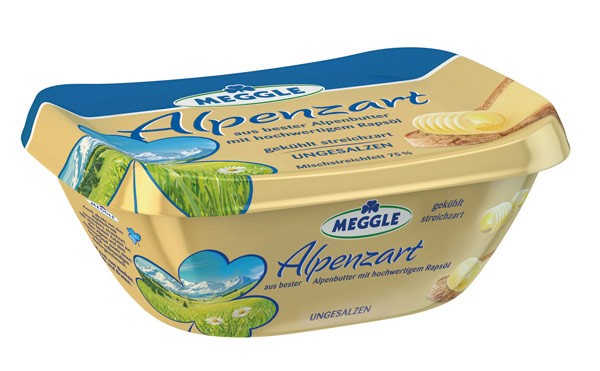
-
2014
Commissioning of the cheese competence centre
After two years of construction work, the Cheese Competence Centre of Salzburg Milch, in which MEGGLE holds the majority share, opened in Lamprechtshausen, Austria.
The brick oven at M-Back in Gebesee goes into operation in May. The new MEGGLE brick oven ciabatta with Mediterranean butter and tomato filling is made here from then on. The entire baguette range from MEGGLE received the ‘TOP Brand 2014’ award.
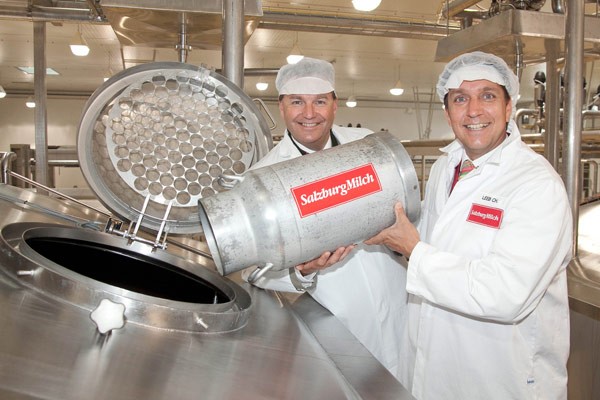
-
2015
Factory expansion and SAP launch in Wasserburg
MEGGLE invested in the Wasserburg site to further secure its future viability. The foundation work on another spray drying plant started in 2015.
After an extensive test phase, data migration and training, the new SAP system in Wasserburg went into operation on November 1, 2015. Processes and data flows in the company are now designed across departments.

Construction of the spray drying system -
2019
Foundation establishment
The sole owner of MEGGLE AG, Toni Meggle, transfers his shares to a foundation. The Chairman of the Supervisory Board announced this at an extraordinary staff meeting. This ensured the continued existence and independence of the MEGGLE group of companies, because a foundation is designed to last forever and belongs to itself. ‘In the foundation’s statutes, I expressly and irreversibly ordered that the company may not be sold. ‘In this way, I ensure that the MEGGLE group of companies remains a medium-sized company with jobs in the long term,’ emphasises Toni Meggle to the workforce in Wasserburg.

-
2020
New corporate structure
MEGGLE set the course for the future with a name change. The group of companies from Wasserburg am Inn were to operate as MEGGLE Group GmbH from then on. In the legal form of a GmbH, the equity capital and the assets contributed are retained in full.
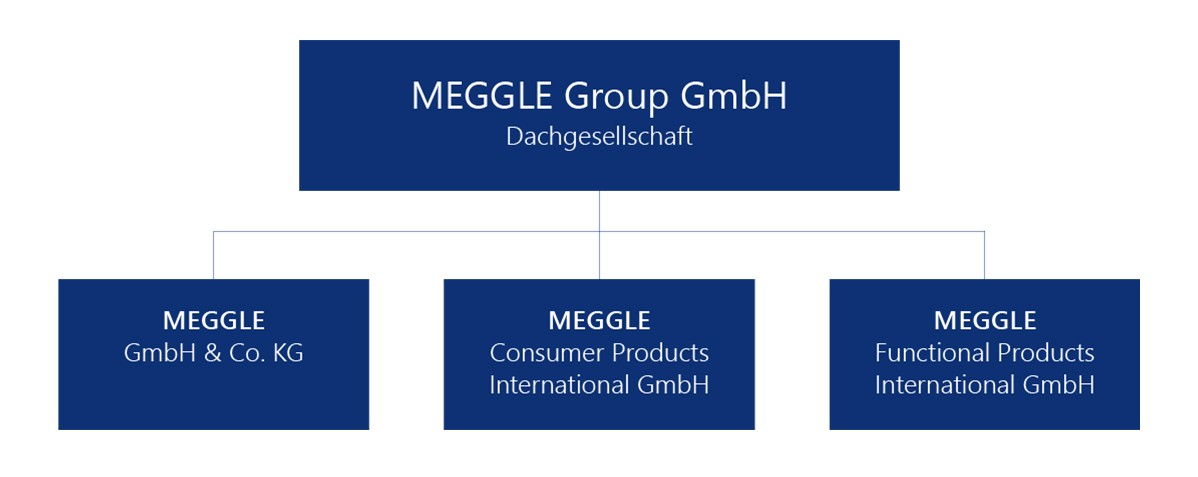
-
2021
MEGGLE group grew and Toni Meggle celebrated his 90th birthday
After fully acquiring M-Back GmbH the previous year, MEGGLE took over another company. In May, Stegmann Emmentaler Käsereien GmbH became part of the group. With further investments in Wasserburg am Inn, the location was sustainably strengthened.
A special anniversary was coming up on May 12th. Toni Meggle turned 90 years old
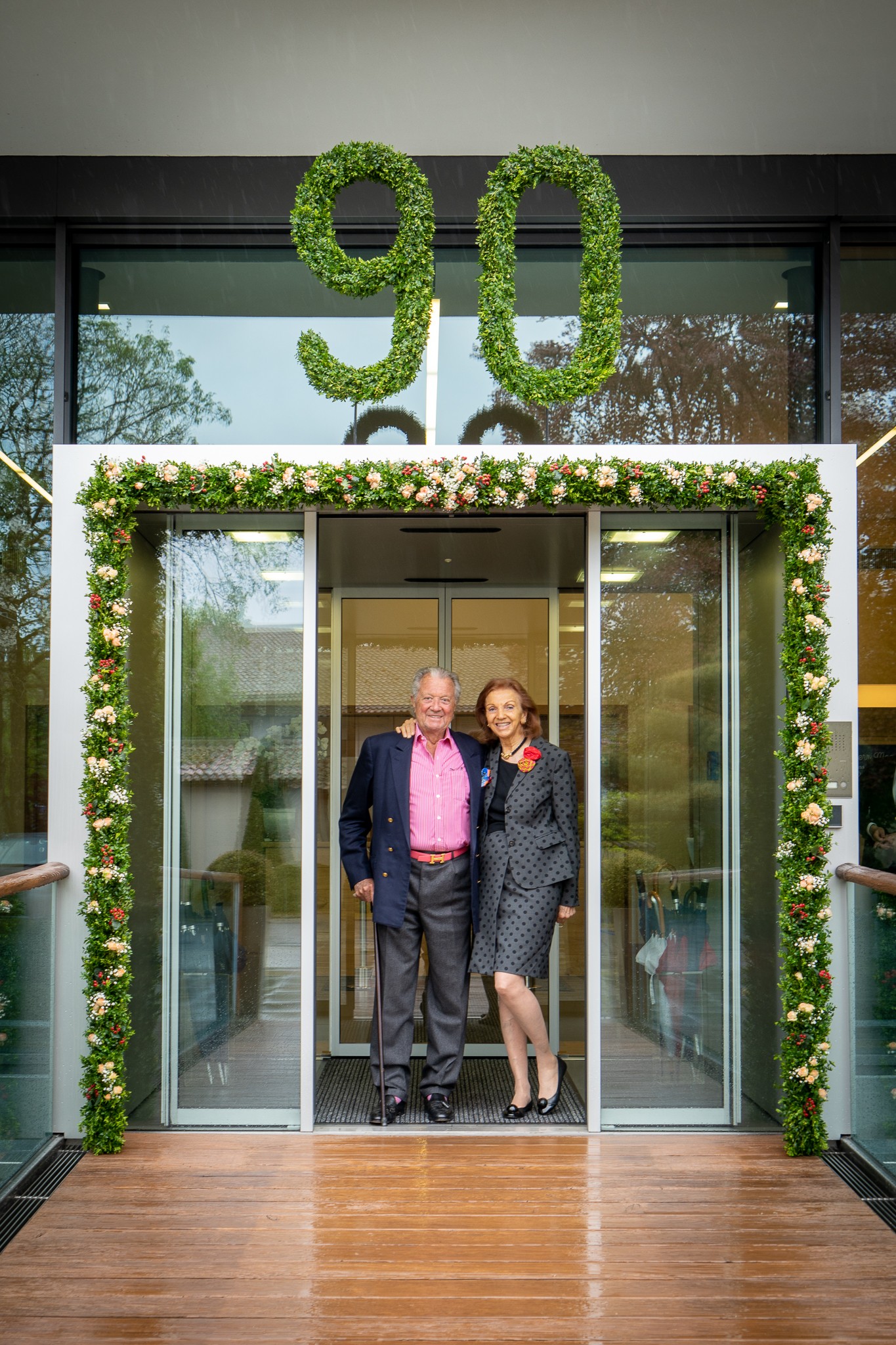
-
2022
135th anniversary celebration and name change of the subsidiaries
On March 18, 1887, Josef Anton Meggle I laid the foundation for today’s MEGGLE Group by registering a cheese dairy business. 135 years later, the company is a global player and a world-renowned brand. The Meggle family celebrated this special company anniversary together with the workforce, guests of honour and the Bavarian Minister-President.
‘M-Back’ became MEGGLE Bakery, while ‘Stegmann’ turned into MEGGLE Cheese. With the name change of the two new companies, it was now made clear from their external appearance that they are subsidiaries of the strong MEGGLE brand. The German locations also began moving closer together culturally.
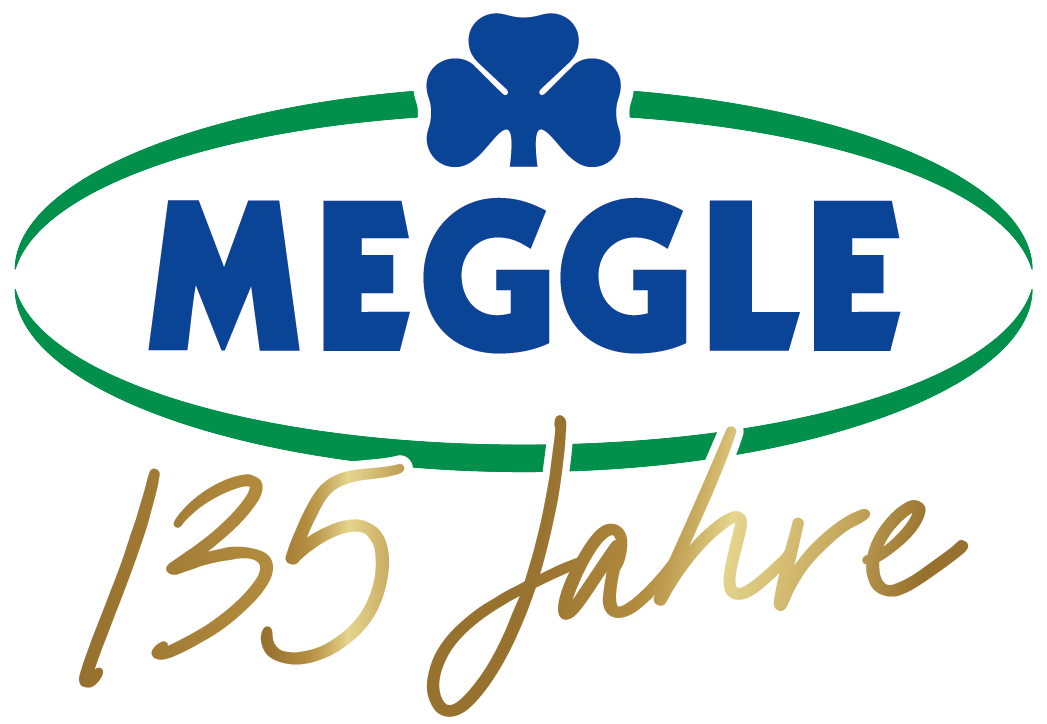
Get to know the Toni Meggle Fondation.